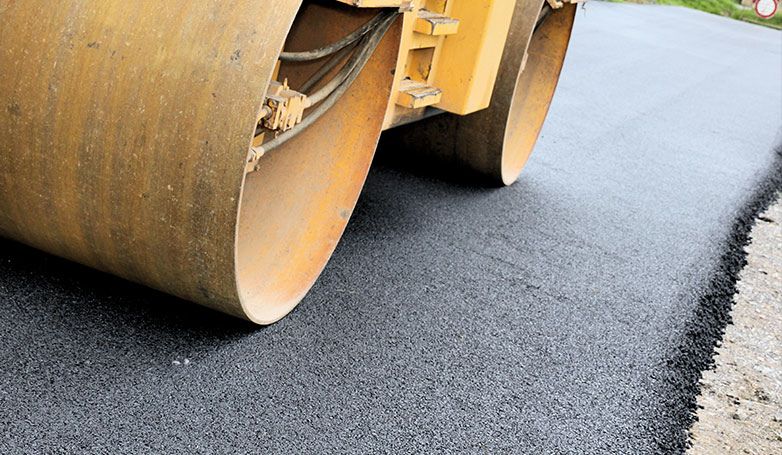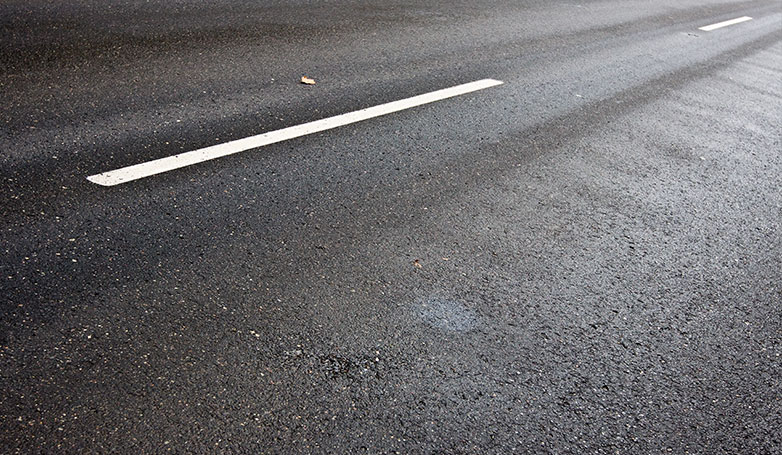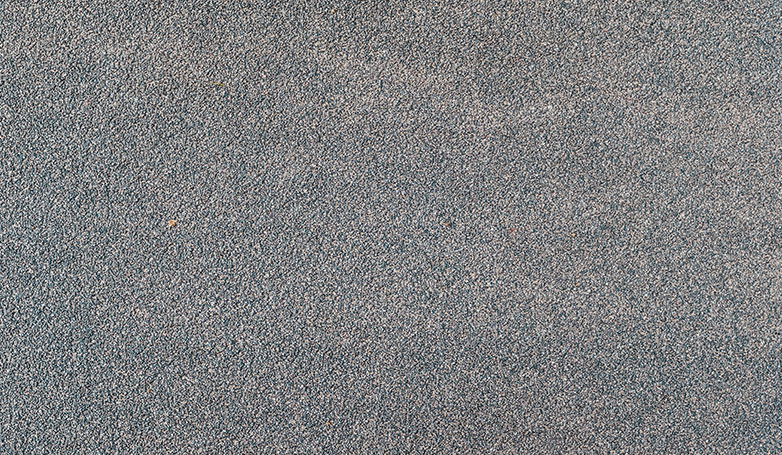New pavement – Asphalt Care: Do’s and Don’ts for Longevity
When you have a new asphalt pavement built, you want it to preserve its quality, curb appeal, and flexibility as long as possible. There are numerous beneficial reasons asphalt is a favorite option for residential and commercial parking lots and driveways, including longevity and flexibility.
Adequate care and maintenance should commence immediately after the new pavement is installed. Part of adequate care is to understand the best time to wait before using your freshly laid asphalt pavement and things you can do to keep it aesthetically appealing and operational, enduring for longer years.
Yes, of course, asphalt is designed to last you a good number of years, but that doesn’t suggest that you shouldn’t take care of it. Adequate maintenance should be done to ensure outstanding functioning asphalt pavement.
How can you properly maintain your new asphalt pavement?
Here are a few maintenance tips you may adopt to prolong the life service and attractiveness of your asphalt pavement:
- Allow your asphalt driveway to fully dry and harden for at least 2- 3 days (depending on the temperature heat) before you can use it
- Seal coat your driveway, parking lot, etc. every two to three years
- Always pay close attention to the edges of your asphalt pavement
- Carry out regular cleaning of the asphalt pavement
- Stop water from pooling and standing on your asphalt pavement
- Avoid fuel, anti-freeze, oil, fluid spills, power steering, and leaks on your asphalt pavement
- Always keep excessive weight off your new pavement.
- Ensure you park in random spots for the first six to twelve months.
You will enjoy an asphalt driveway, and parking lot for long periods if you know how to maintain it properly.
Proper care for new asphalt instructions

Maintaining your asphalt pavement is always crucial, but this is significantly intensified when the pavement is brand new. Knowing how to take proper care of your new asphalt plays an essential role in its future survival
How long to wait before driving on a new surface
Asphalt drying time is influenced by weather conditions and the thickness of the asphalt.
Experts suggest 48 to 72 hours as the optimal time to allow vehicle traffic on your newly paved driveway. This is for fresh asphalt, as resurfaced asphalt can dry almost immediately after completing it
Assist the asphalt curing process
As asphalt contains liquid tar, it requires some time to harden and cure properly. However, some factors determine an asphalt curing time, including dilution rate, the thickness of the asphalt, humidity, and temperature.
Your parking lot or driveway will ideally be completely cured within six to twelve months; before then, it will stay malleable and soft.
Drive slowly
Take your time accessing your freshly paved surface because driving your vehicle at a slower speed will minimize scuff marks and scarring on the new asphalt surface. If you travel at a slower speed, you’ll avoid any harm from happening.
Again, if you have new pavement installed either for personal or public use, it’s safer to introduce speed mitigation strategies in the area to prevent unnecessary damage.
Mistakes to avoid making with new asphalt

Installing a new asphalt surface requires careful consideration and maintenance to ensure its longevity and performance. To prevent common pitfalls, here are key mistakes to avoid when dealing with new asphalt.
Avoid parking in the same spot every day
If you allow people to park in exactly the same spot regularly on uncured asphalt, it can leave marks or develop low spots in the asphalt where the wheels stay. This is more of a concern with driveways but can as well be a problem if your lot has designated parking spaces.
Always ensure people know that they ought to try and avoid parking in precisely the very same position every day to help prevent this. Also, if there are trailers or vehicles parked and not moved for many days at a time, put a piece of plywood underneath the tongue
Avoid driving on the edges
The vulnerability of an asphalt driveway lies in its edges, making them susceptible to cracking and crumbling. It is crucial to refrain from driving off the edges of your asphalt driveway to prevent these structural issues, as the lack of side support can lead to undesirable consequences. The act of driving over the edges imposes excessive weight, inducing cracks that can subsequently escalate into more significant problems, issues that could have been preemptively avoided.
To fortify the sides of your asphalt driveway, a strategic option is to use topsoil to build up the edges. However, it’s imperative to exercise patience and caution in this process, as this should only be undertaken once the driveway has fully cured. By waiting for the complete curing of the driveway, you ensure that the structural integrity is established, allowing the addition of topsoil to effectively provide the necessary support to the edges, preventing potential damage and promoting the long-term resilience of your asphalt surface.
Avoid excessive weight on the new asphalt surface
Excessive pressure from large, heavy vehicles can lead to depressions and structural damage to your newly laid pavement. It is crucial to be vigilant in preventing such issues, and one effective measure is to consistently avoid the presence of substantial trucks on your freshly installed driveway.
Moreover, if you find yourself in a situation where boats or campers need to be stored on your pavement for extended periods, consider implementing additional protective measures. Placing a sturdy piece of plywood beneath the tongue jack and under the tires can help distribute the weight more evenly, minimizing the risk of concentrated pressure points and potential damage to the pavement surface. This proactive approach ensures the longevity and integrity of your pavement, offering an extra layer of protection against the challenges posed by prolonged storage of heavy recreational vehicles.
Professional tips to help you maintain your pavement for durability

Maintaining the durability and appearance of your pavement requires proactive care and attention. Here are professional tips to help you maximize the longevity of your pavement and keep it in top condition.
Ensure proper drainage of water
Whether your pavement has been in existence for years or you’re planning to build a new surface, you need to consider the correct drainage system to improve water flow off your parking lot or driveway. Instead of putting your property at risk, invest in good drainage for your paved surface.
Adequate subsurface drainage will keep the water flowing. Implementing an aggregate base together with quality class 5 aggregate would help your base layer to be stable, solid and to drain the water away from the asphalt pavement rapidly.
Water has the ability to decrease the life expectancy of your new pavement (driveway or lot) if you fail to pay careful attention to proper drainage system installation. A surface that continuously accumulates standing water does have a drainage issue that needs to be addressed.
In a nutshell, plan a new asphalt pavement project with correct water management in mind.
Apply Sealcoating regularly

Sealcoating is among the most critical things you should be doing to protect your asphalt against potential degradation over time. Sealcoating delays infiltration from harmful fluids like vehicle fluids. It also protects asphalt against exposure to the elements (such as moisture) and decreases the likelihood of potholes formation.
Apply a seal coat a year after the asphalt has been installed and then every two to three years afterward since exposed pavement stays porous, becomes rough, dry out, and loses its existence rapidly.
Notwithstanding, avoid over sealing, as it will reduce the service life of the pavement. You should only apply a seal coat when the initial seal coat is stripped off by traffic to a level where large parts of the bare pavement underneath the seal coat are revealing.
Care for oil spills

Whatever leaks out of an automobile has the tendency to break down asphalt, deteriorating the surface. If you observe any oil, transmission fluid, or gas spilled over to asphalt, you should wash it off immediately because it can lead to significant issues.
Make sure you often clean spills up with water, a soft brush, and dish soap to help keep your new pavement flexible and stable.
Also, any holes caused by these spills ought to be covered with a cold patch. In northern climates, where weather changes are severe, contraction and expansion cracks are inevitable.
Any hairline cracks that might have evolved over the winter due to the expansion and contraction of the ground should be covered using crack filler.
Remove snow and ice

Winter can hurt asphalt since there is constant ice and snow on the ground. This mainly makes a new asphalt pavement vulnerable.
You can make use of a lightweight plastic shovel to have snow and ice removed from your driveway or parking lot. Additionally, you are required to shovel early and regularly. This helps prevent the ice or snow from piling up on the asphalt.
To avoid damaging your pavement by the shoveling action, you should hold the shovel at a shallow angle while removing snow and ice. Avoid holding shovels at a steep angle or using an ice pick to dig into your pavement.
Using salt and brine solutions is also an excellent way to have snow and ice removed from your pavement. This strategy has been utilized on many roadways for some time now.
Traditionally, salt has been used in the winter months to melt snow and ice from residential and commercial pavement while delivering more traction for vehicles.
If you lack the time to shovel your driveway or apply salt and brine to manage snowfall, consider hiring a reputable winter removal service provider. Ensure they treat your new pavement (lot or driveway) with utmost care.
A snow blower is a safe way to have snow and ice removed from your parking lot or driveway.
Remove weeds and plants
You will find weeds growing nearly anywhere and can easily get out of hand if not handled on time. Weeds can sprout up through tiny cracks on hard surfaces like concrete and asphalt, cracking it more or generating trip and bump hazards.
They can even eat away at disintegrating edges and even push up from below a surface that is thinning. The roots themselves can trigger substantial amounts of damage, disintegrating the surface. Hence, the very time you observe weeds sprouting, eliminate them immediately.
Pulling them will make them disappear only for a short while unless you are certain that you also got all of the root structure. This can be daunting or impossible if the weeds are growing from underneath a solid surface. Therefore, use a weed killer to stop weeds from coming back.
Suppose you are not certain of the type of weed killer to use.
In that case, you can seek the advice of a landscape professional because some herbicides can trigger environmental harm, particularly as they are easily washed away from asphalt or concrete into storm drains.
The life expectancy of asphalt – with and without proper maintenance

An asphalt pavement’s expected lifespan depends on a variety of factors. These include installation quality, weather, adequate maintenance, type of materials, and much more.
For new pavement installation, the normal design life is 20 years (for regular highways) and 30 years (for high-volume highways). Correct maintenance can extend the lifespan of asphalt pavement to 25-30 years. This extension depends on the solidity of the foundation, the underlying soil types, the drainage efficiency of particular soils, and the thickness of the original pavement.
Most asphalt types can offer approximately 90% of their original structural integrity level after 10 years without regular maintenance. Once after twenty years, the asphalt pavement will only have 55% of its original durability.
What are the ways to extend the service life of your asphalt pavement?
By paying close attention to the asphalt pavement condition, you can increase its lifespan and cut repair costs. The following are the things you should do to prolong your asphalt service life:
- Adopt routine seal coating, probably every two to three years. This helps protect your pavement from holes, cracks, weather elements, and much more.
- Carry out thorough inspections on a regular basis to spot and fix tiny cracks in the asphalt, preventing extensive damage and expensive repairs
- If you want to make sure your asphalt pavement serves you as long as possible, invest in high-quality installation.
- Know the right time to overlay asphalt when it is in bad shape instead of making small fixes. This can enhance the pavement lifespan without expensive replacement.
- Always maintain your asphalt pavement clean as big debris can trigger cracks and lead to pooling water. Besides, they can fill up the damage and deter you from easily repairing it. A cleaned new pavement lasts a lot longer, looks way better, and provides superior features.
Conclusion
An asphalt pavement installation for residential or commercial use is a considerable investment. And of course, you want your investment to give you the best value by performing excellently, lasting for a long time.
Yes, asphalt material is durable, flexible, and solid, and when used to build pavement, it can last for a surprising number of years. However, proper maintenance plays a crucial role in how long asphalt pavement will serve you.
For that reason, it is vital to employ adequate regular asphalt maintenance strategies to maintain and extend your pavement’s life.
You can also seek experts’ advice on how best to take care of your pavement. This way, your investment can deliver the expected service life.


